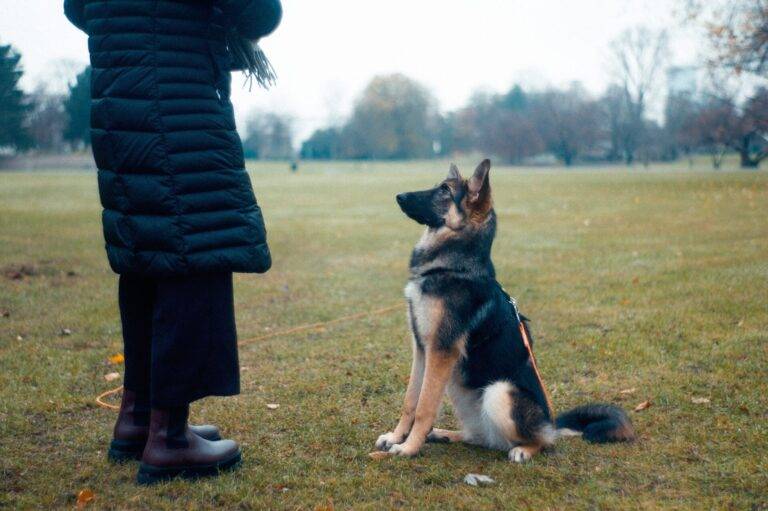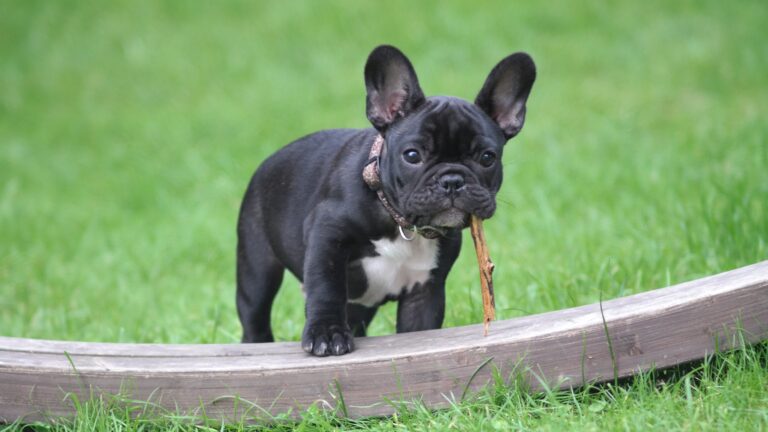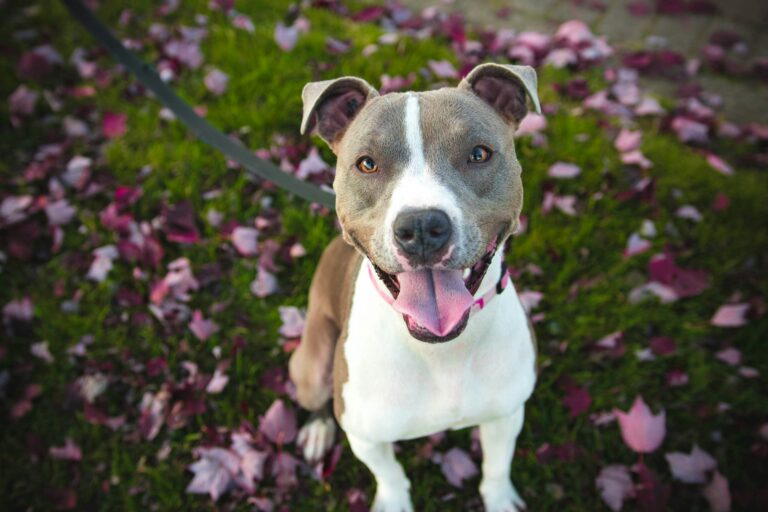Positive Dog Training Techniques
Welcome to the world of Positive Dog Training Techniques! Good vibes only here, as we dive into the best methods to help your furry friend learn new tricks and behaviors. Discover how rewarding and enjoyable training can be for both you and your dog, while strengthening your bond. With these proven techniques, you’ll nurture a well-mannered and confident companion. So, let’s embark on this exciting journey together and unleash your dog’s full potential!
Understanding Positive Dog Training Techniques
As pet owners, we must understand that training our dogs is an important responsibility. Positive dog training techniques are highly effective and humane methods that help us teach our furry friends good behavior.
Operant Conditioning
One of the most essential concepts of positive dog training is operant conditioning. This theory suggests that a dog’s behavior is shaped by its consequences. If a dog’s behavior is rewarded with something positive, it is likely to repeat that behavior. On the other hand, if a dog’s behavior is met with something negative, it is less likely to repeat that behavior in the future.
Positive Reinforcement
Positive reinforcement is the process of rewarding a dog for positive behavior. This can be done by giving treats, verbal praise, or even affection. Positive reinforcement is an effective way of reinforcing good behavior and can help dogs learn new tricks and commands.
Marker Training
Marker training is a type of positive reinforcement training that uses a sound or word to indicate to the dog that it has performed a desirable behavior. This sound or word is known as a “marker.” The marker is then followed by a reward. This type of training helps dogs associate sound with positive reinforcement, making it a highly effective training method.
——————————-
Get access to the best pet discounts, items, and training by clicking the link below
————————————-
Benefits of Positive Dog Training Techniques
Positive reinforcement training techniques have become increasingly popular in recent years as more and more dog owners recognize the benefits of using positive methods for training their furry friends. In this section, we will explore some of the benefits of using positive reinforcement training techniques for your dog.
Stronger Bond with Your Dog
One of the most significant benefits of positive reinforcement training is that it can help you develop a stronger bond with your dog. Positive training methods involve rewarding your dog for good behavior, which helps to reinforce the behaviors you want to see more of in your dog. This positive reinforcement can help create a positive association between you and your dog, leading to a happier and more trusting relationship.
Improved Behavior
Another benefit of using positive reinforcement training is that it can lead to improved behavior in your dog. Positive reinforcement training techniques focus on rewarding good behavior rather than punishing bad behavior. This approach can be much more effective than traditional punishment-based methods, which can often lead to fear and anxiety in dogs. By focusing on rewarding good behavior, you can encourage your dog to repeat those behaviors and learn new ones.
Happier Dog
Finally, positive reinforcement training can lead to a happier dog overall. Dogs that are trained using positive methods are more likely to be confident, well-behaved, and well-adjusted. They are also more likely to enjoy spending time with their owners and other people and dogs. By using positive reinforcement training techniques, you are helping to create a happy and well-adjusted dog that will bring joy to your life for years to come.
——————————-
Get access to the best pet discounts, items, and training by clicking the link below
————————————-
Tips for Positive Dog Training Techniques
Positive reinforcement is the most effective way to train your dog. It’s a way of rewarding good behavior and encouraging it to continue. Dogs respond well to positive reinforcement, which is why it’s essential to incorporate it into your training methods. Here are some tips to help you with positive dog training techniques:
Consistency is Key
Consistency is key when it comes to dog training. Dogs thrive on consistency and routines, and they’ll quickly learn what you expect from them if you’re consistent with your training. It’s crucial to establish a consistent routine and stick to it. This consistency will help your dog recognize what behaviors are acceptable and which ones aren’t.
Be Patient
Training a dog takes time, and it’s essential to be patient throughout the process. You won’t see results overnight, and it’s crucial not to get frustrated or give up. Dogs can sense your emotions, and if you’re feeling frustrated or angry, they’ll pick up on it. Instead, remain patient and positive, and your dog will respond better to your training.
Use Treats Appropriately
Treats are an excellent way to reward your dog for good behavior, but it’s essential to use them appropriately. Treats should be used as a way to reinforce good behavior, not as a bribe. It’s crucial to give treats immediately after your dog displays good behavior, so they understand what behavior they’re being rewarded for. Over time, you can gradually reduce the number of treats you give, and your dog will continue to perform well.
Incorporating these techniques into your dog’s training will help create a positive and rewarding experience for both you and your furry friend. Remember to be patient and consistent, and you’ll see the results of your efforts in no time.
Common Mistakes to Avoid in Positive Dog Training
Positive dog training is the most effective way to develop a strong and healthy relationship with your furry friend. However, some common mistakes can hinder your progress and even cause your dog to become confused or anxious. Here are some mistakes to avoid in positive dog training:
Punishing Bad Behavior
Punishing your dog for bad behavior is a common mistake that many pet owners make. Punishment may seem like an effective way to correct your dog’s behavior, but it actually does more harm than good. When you punish your dog, they become fearful and anxious. This can lead to an increase in bad behavior, as your dog may not understand why they are being punished.
Positive reinforcement, on the other hand, is the best way to encourage good behavior. When your dog behaves well, reward them with a treat or praise. This will help your dog associate good behavior with positive outcomes and encourage them to repeat that behavior in the future.
Inconsistency in Training
Consistency is key when it comes to positive dog training. If you are inconsistent in your training, your dog may become confused and unsure of what you expect from them. For example, if you allow your dog to jump on you one day but then scold them for it the next day, your dog may not understand why their behavior is suddenly unacceptable.
To avoid this mistake, make sure you are consistent in your training. Set clear rules and boundaries for your dog, and stick to them. This will help your dog understand what is expected of them and make training much easier.
Failing to Identify the Root Cause of Bad Behavior
When your dog exhibits bad behavior, it may be tempting to simply correct that behavior without addressing the underlying cause. However, this approach is unlikely to be effective in the long term.
Instead, it’s important to identify the root cause of your dog’s bad behavior. For example, if your dog is barking excessively, they may be anxious or bored. Addressing the underlying cause, such as by providing more exercise or mental stimulation, will likely be more effective than simply trying to stop the barking.
By avoiding these common mistakes in positive dog training, you can develop a strong and healthy relationship with your furry friend based on trust and respect. Remember to be patient and consistent, and always use positive reinforcement.
——————————-
Get access to the best pet discounts, items, and training by clicking the link below
————————————-
Conclusion
In conclusion, positive dog training techniques can make a big difference in your dog’s behavior and your relationship with them. By using rewards, praise, and encouragement, you can create a happy and well-behaved dog without resorting to punishment or fear-based methods. Remember that training takes time and patience, but the results are worth it. With a little effort and consistency, you can have a furry friend who is a joy to be around and loves learning new things. So, let’s spread good vibes only and give our pups the positive training they deserve!
FAQ
When it comes to dog training, it’s common for pet owners to have a lot of questions. Here are some frequently asked questions about positive dog training techniques:
What is positive dog training?
Positive dog training is a method of teaching your dog that focuses on reward-based techniques rather than punishment. It involves using treats, toys, and praise to reinforce good behavior and ignore or redirect bad behavior. Positive training techniques are proven to be more effective than traditional methods that use physical punishment or intimidation.
Is positive dog training suitable for all dogs?
Yes, positive dog training is suitable for all dogs, regardless of their breed, age, or temperament. It’s a gentle and effective way to train your dog, and it can be used to teach basic obedience commands, as well as more advanced tricks and behaviors.
How long does it take to see results with positive dog training?
The time it takes to see results with positive dog training varies depending on the dog and the behavior you’re trying to teach. Some dogs may learn quickly, while others may take longer to master a new behavior. Consistency is key, and it’s important to practice positive training techniques regularly to see the best results.
Can positive dog training be used to correct bad behavior?
Yes, positive dog training can be used to correct bad behavior, but it requires patience and consistency. Rather than punishing your dog for bad behavior, you should redirect their attention to more appropriate behavior and reward them for it. Over time, your dog will learn that good behavior is more rewarding than bad behavior.
What are some common positive dog training techniques?
Common positive dog training techniques include clicker training, lure-reward training, and shaping. Clicker training involves using a clicker to mark good behavior, while lure-reward training involves using a treat or toy to lure your dog into performing a behavior. Shaping involves breaking down a behavior into small steps and rewarding your dog for each step toward the desired behavior.
Are there any downsides to positive dog training?
The only downside to positive dog training is that it requires more time and patience than traditional training methods. It can take longer to see results, and it requires consistency and repetition to reinforce good behavior. However, the benefits of positive dog training far outweigh the downsides, as it creates a stronger bond between you and your dog and results in a happier, well-behaved pet.









